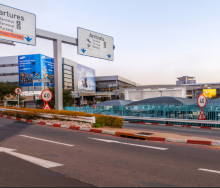The latest passenger demand report from Iata shows that international air travel continued to recover in December 2022 and throughout the whole of last year overall. It climbed 152,7% versus December 2022; international traffic climbed 80,2% over December 2021, reaching 75,1% of the level in December 2019.
Domestic traffic for 2022 rose 10,9%, compared with the previous year, at 79,6% of the 2019 level. December 2022 domestic traffic was up 2,6% over the previous year – 79,9% of December 2019 traffic.
“The industry left 2022 in far stronger shape than it entered, as most governments lifted COVID-19 travel restrictions during the year and people took advantage of the restoration of their freedom to travel. This momentum is expected to continue in the New Year, despite some governments’ over-reactions to China’s reopening,” says Willie Walsh, Iata DG.
Total traffic in 2022 (measured in RPKs) rose 64,4%, compared with 2021. Globally, full year 2022 traffic was at 68,5% of pre-pandemic (2019) levels. December 2022 total traffic rose 39,7% compared with December 2021 and reached 76,9% of the December 2019 level.
“Let us hope that 2022 becomes known as the year in which governments locked away forever the regulatory shackles that kept their citizens earthbound for so long. It is vital that governments learn the lesson that travel restrictions and border closures have little positive impact in terms of slowing the spread of infectious diseases in our globally inter-connected world. However, they have an enormously negative impact on people’s lives and livelihoods, as well as on the global economy that depends on the unfettered movement of people and goods,” Walsh adds.
African airlines’ annual traffic rose 89,2% in 2022 versus the previous year. Full year 2022 capacity was up 51% and load factors climbed 14,5 percentage points to 71,7%, the lowest among regions. December 2022 traffic for African airlines rose 118,8% over the previous year.
Asia-Pacific airlines posted a 363,3% rise in full year international 2022 traffic, compared with 2021, maintaining the strongest year-over-year rate among the regions.















